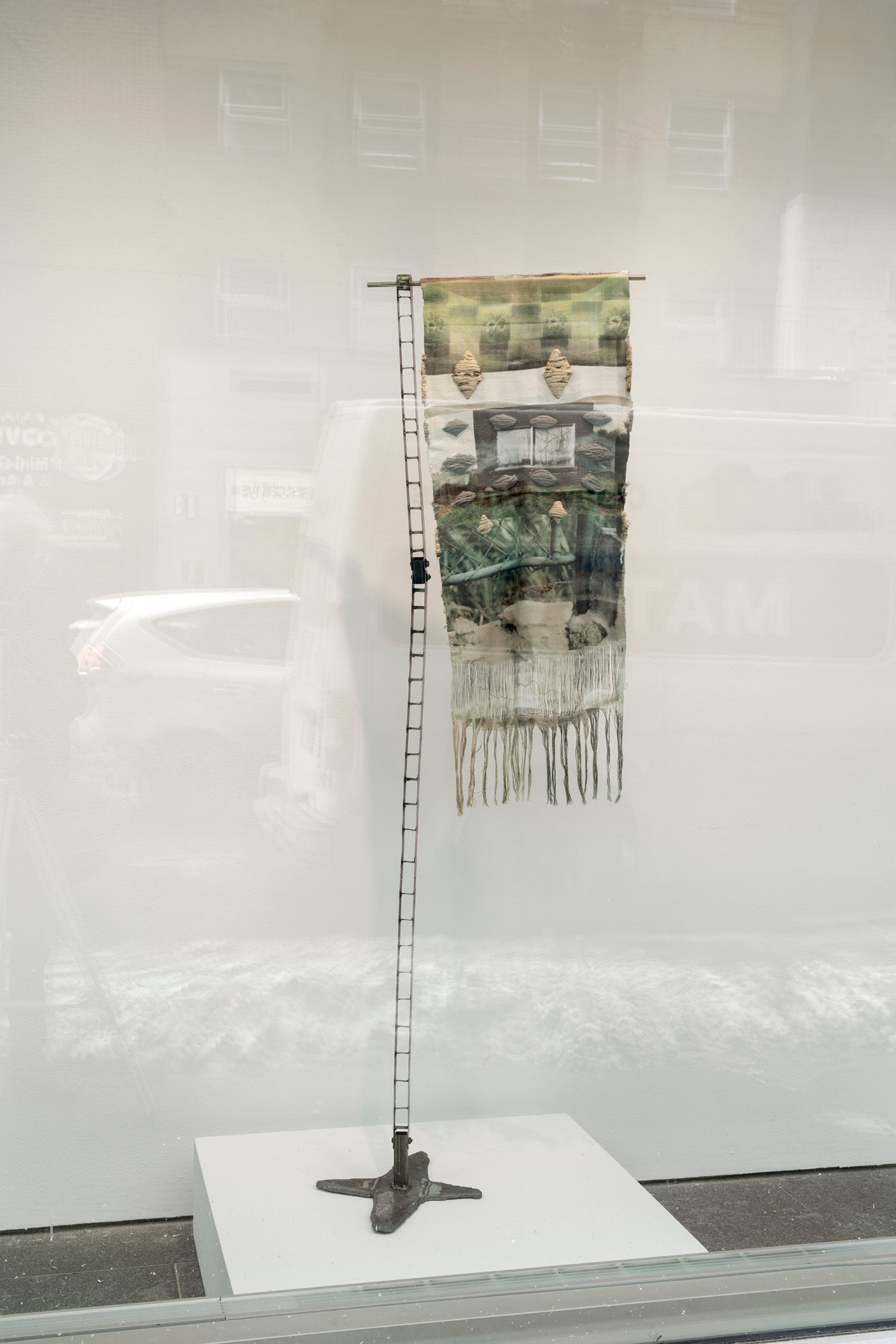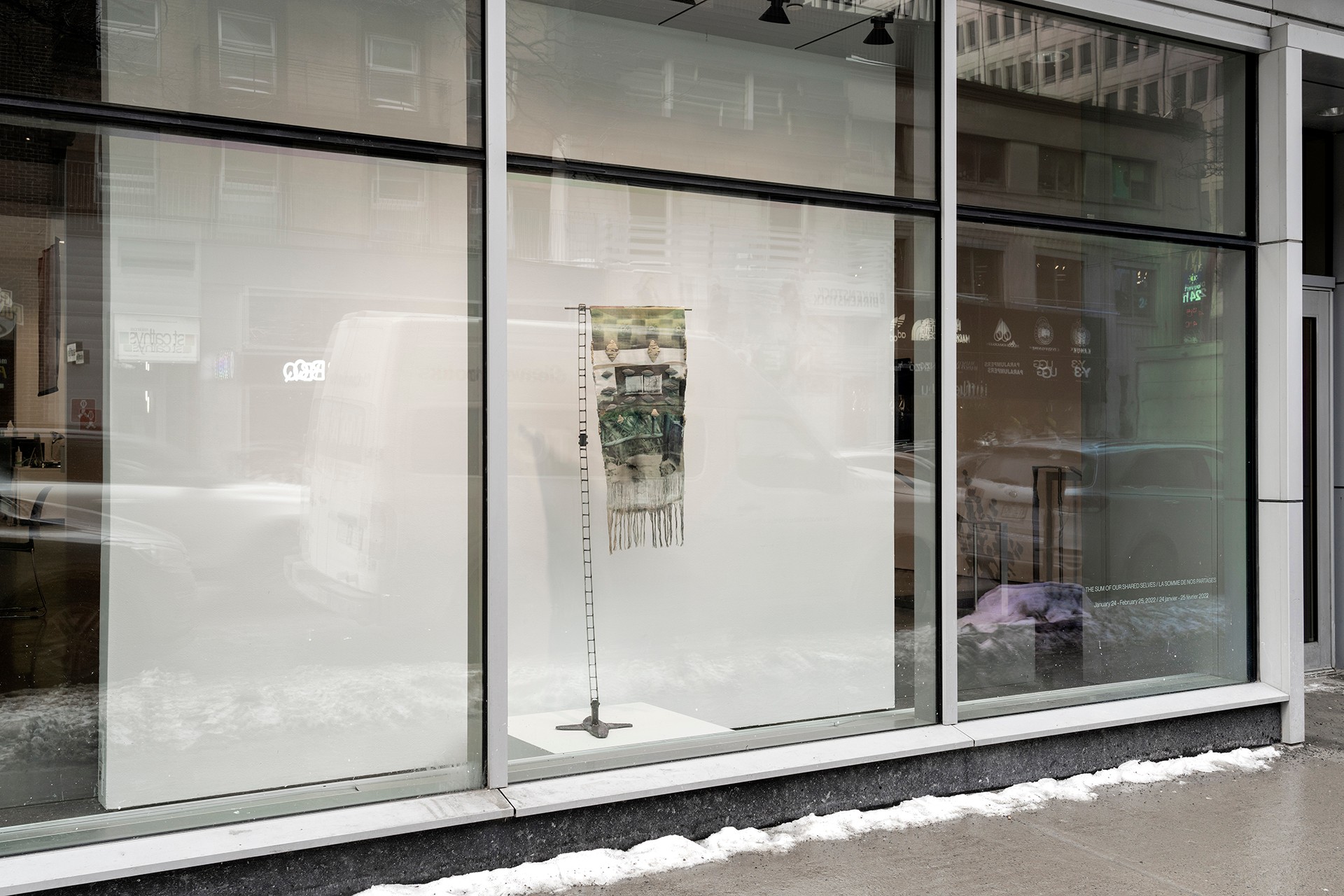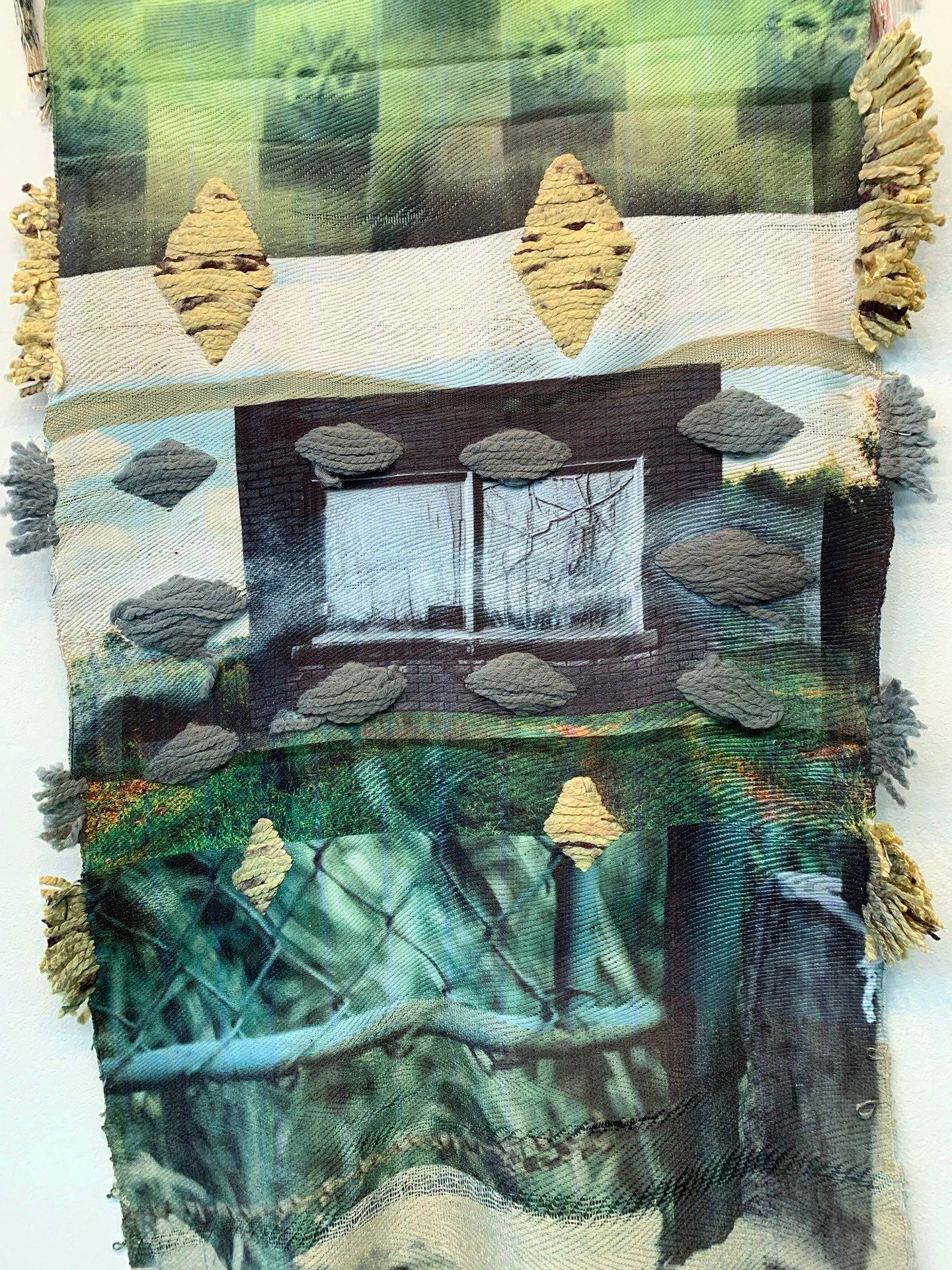PAULINA BEREZA
False Memory 22021

Handwoven polyester, wool, silk, steel, 25" X 70" X 10" approx.
Artist statement
The works from the series False Memory 2 speak to the concept of recollection in relation to the passage of time. Drawing from urban landscapes, False Memory 2 combines a diverse range of images that evoke a dialogue between concepts of space-time. With its roots in hereditary rural craft practices, the weaving was fashioned by hand using the inherited techniques that generations of Eastern European artisans used in order to create flat woven kilim rugs. In direct contrast to the soft and historically charged weave, the machine-made steel support looms large and heavy to its side, obliging us to consider a link between the rural crafts, and the new world of industrialization, automation, resource extraction, and surveillance.
 Photo by Guy L'Heureux
Photo by Guy L'Heureux
 Photo by Guy L'Heureux
Photo by Guy L'Heureux
 Photo by Guy L'Heureux
Photo by Guy L'Heureux
Artist’s biography
Paulina Bereza is a Polish born, Montreal-based artist and designer. Formally trained in fashion design and fibres and material practices, her work focuses on the inherent qualities of matter. The intersection between craft and societal solidarity has inspired her to hybridize hereditary craft practices as a way to explore themes of time, displacement, and privacy within contemporary societies. Currently, Bereza is in her last year at Concordia University, majoring in Fibres and Material practices. In 2021, she won the Outstanding Student Award (2021) with the Surface Design Association, and her recent works were featured in the Biennale Internationale du Lin de Portneuf 2021 and the international fibre student exhibition, Future Tense 2021.
 Photo by Guy L'Heureux
Photo by Guy L'Heureux
Essay
Restructuring the Kilim: Bridging Traditional/Industrial Spaces and Reclaiming Polish Craft Practice
Author Charlotte Perrault
Artist Paulina Bereza
Artwork False Memory 2, 2021
In False Memory 2, Polish-Canadian artist Paulina Bereza adapts the tradition of kilim weaving, a once-common craft in Poland,1 and incorporates it into her contemporary practice of weaving, sculpture, and photography. Standing at almost six feet, hanging from a metal, robotic-like structure, the sculptural piece features a hand-woven kilim with digital photographs printed on its surface. In the work’s material processes and aesthetics, Bereza bridges the industrial/automated with the traditional/manual, producing an artwork which actively engages and conceptually represents her diasporic experience, and related understandings of past and present. Bereza reclaims the ancient weaving technique, placing her personalized kilim within the historical lineage of the Polish kilim — in conversation with the ones that came before it.
Polish kilims are traditionally made with natural fibre yarns (mainly out of linen and wool), and often feature geometric iconography compatible with their typical thread pattern.2 In many instances, the weave-pattern is personalized to feature motifs which emphasize the ownership and/or intention for a given kilim.3 Bereza draws upon these traditions through the creative process of False Memory 2. She embeds self-representative elements into the textile with a combined industrial-manual approach, producing a kilim which speaks to her Polish-Canadian experience. Bereza’s kilim is made from white synthetic polyester yarn (as opposed to natural fibres), yet maintains the traditional geometric diamond-shapes through the weave pattern. Layered onto the synthetic stitching via sublimation printing,4 Bereza introduces digital photographs, drawn from personal archives of her hometown of Jaroslaw, as well as images of Montreal where she currently resides. The images feature architectural and landscape elements such as windows, fencing, gravel, grass, and a grid of bathroom tiles from Bereza’s childhood home. The digital photographs interact with the hand-woven motifs, presenting a hybridized textile which falls between the traditional and modernized.

In choosing to work with the kilim, Bereza honours and holds space and time for the complex technique and its contextual life.
The selected photographs, demonstrating contrasted scenes of landscape and industrial architecture from Poland and Canada, communicate a contrast between Bereza’s present-day experience and the histories she associates with her family. Bereza recognizes the manual, often land-related, labour that her family and community engaged in to support themselves, which propelled them forward in times of historic suffering and rebuilding. In the past, kilim-making has acted as one of those manual tasks for the Polish community — acting as a source of trade and financial support.5 In choosing to work with the kilim, Bereza honours and holds space and time for the complex technique and its contextual life. In working with her hands, she feels connected to something innately familiar.
By incorporating synthetic fibres, photographic details, industrial print techniques, and contemporary display structures, Bereza expands the traditional kilim by maintaining the weave pattern and geometric designs, producing a conversation which speaks to her Polish-Canadian identity. False Memory 2 addresses the liminality in Bereza’s intertwined experience of time, selfhood, artistic approach, and diaspora.6 Through the amalgamation of un/natural elements, the work becomes an object which Bereza states “could never be fully hand-crafted, nor industrially produced.”7 In doing so, the work challenges binary understandings of cultural identity and belonging, introducing a work representative of hybridity. Through the specific production and resulting aesthetic, Bereza personalizes her kilim, and opens a conversation between past and present Polish craft practices, using the work to “bring her closer to Polish traditions from a distance.”8
- Paulina Bereza in conversation with the author, June 2021.
- Ibid.
“What is a Kilim?,” accessed June 29, 2021. - Paulina Bereza in conversation with the author, June 2021.
- Sublimation printing is a commercial process which uses synthetic fabric for mass production.
- Paulina Bereza in conversation with the author, June 2021.
- Ibid.
- Ibid.
- Ibid.
Author’s biography
Charlotte Perreault is currently completing her final year of the Art History BFA at Concordia University and is an English Editor for Yiara Magazine. She studies the communication of and advocacy for alternative space and time through art, in relation to disability studies and disability justice. She is a recipient of the Guido Molinari Foundation Maurice Forget Internship (2021) and the Mitacs Research Training Award (2020). This summer, with the Guido Molinari award, Charlotte worked with Artexte on the pre-publication coordination of the upcoming book Who Was Who Was Who in Contemporary Canadian Art by Artexte researcher-in-residence, librarian and artist John Latour.

